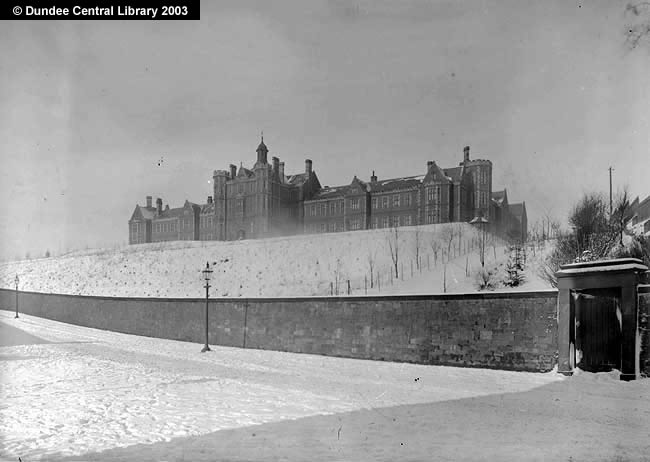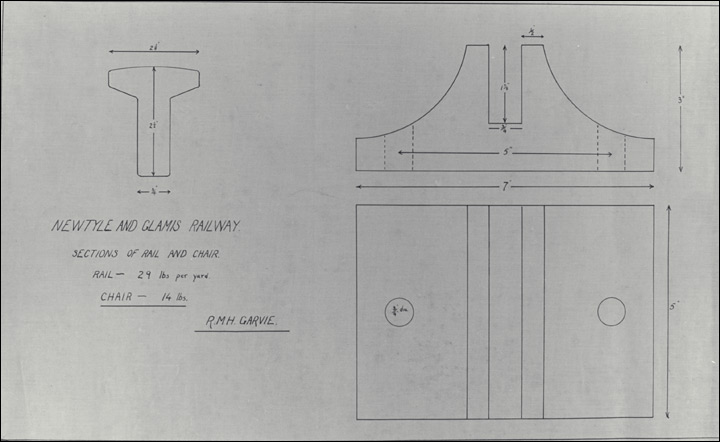
The line passed up the right of the hospital.

Diagram of the rails and rail chairs
 The line passed up the right of the hospital. |
 Diagram of the rails and rail chairs |
The Law incline ran parallel and to the west of Constitution Street through the grounds of the Royal Infirmary.
The following details are taken from the Account of the Dundee and Newtyle Railway in The Quarterly Journal of Agriculture, Volume IV No XIX, 1833.
The depot at Dundee is 84 feet above the low-water mark at spring tides in the harbour. The first inclined plane, then, rises from the depot in the Ward to the east side of the Law, 244 feet perpendicular height, along an inclination of 760 yards, at the rate of 1 in 10; then the tunnel is passed through in 400 yards.
The waggons and carriages are drawn up and let down the incline by a rope three inches in diameter. The rope passes over metal pulleys and cylinders set about 20 feet apart. It is wound round a large drum of 12 feet in diameter, which is under the command of the engineer by a powerful drag. The inclined plane has a siding upon it. The (stationary) engine (at the entrance to the tunnel) works a double rope, and as this has the steepest inclination of the three, the ascent of waggons at the same time moderates the speed of the descending weight. At the plane where the waggons pass on this incline, the rope is of course bent out of the straight line, and is kept in that position by a sheave of metal of a conical shape, revolving on its longitudinal axis.
In his book The Dundee & Newtyle Railway (Oakwood Press, 1995), Niall Ferguson says that above and below the section of double track where the trains passed each other, there were three lines of track. The up trains would use one of the outer rails and the centre rails and those coming down the other outer rail and centre rail. The symmetrical cross section of the rails obviously allows this and such an arrangement would help keep the two parts of the rope apart.
The Ordnance Survey maps for Dundee dated 1857-58, from the National Library of Scotland web-site (link no longer working) clearly show this arrangement.
Please feel free to contact me by e-mail at elliottsimpson@hotmail.com
May 2019